Find all the best Museums and Heritage sites now with us….
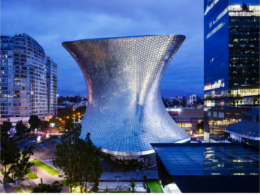 The Museo Soumaya was Designed by the Mexican architect Fernando Romero, is a private museum in Mexico City. It is a non-profit cultural institution with two museum buildings in Mexico City – Plaza Carso and Plaza Loreto. It has over 66,000 works from 30 centuries of art including sculptures from Pre-Hispanic Mesoamerica, 19th- and 20th-century Mexican art and an extensive repertoire of works by European old masters and masters of modern western art such as Auguste Rodin… |
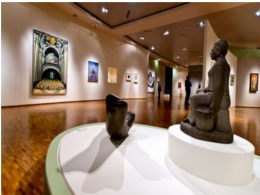 The Museo de Arte Moderno or Museum of Modern Art is located in Chapultepec Park, Mexico City, Mexico.The museum is part of the Instituto Nacional de Bellas Artes and prepares exhibitions of national and international contemporary artists. The museum also hosts a permanent collection of art from Remedios Varo, Gelsen Gas, Frida Kahlo, Olga Costa, Diego Rivera, David Alfaro Siqueiros, José Clemente Orozco, Manuel Álvarez Bravo, Leonora Carrington, Rufino Tamayo, Juan Soriano, and Vicente Rojo. |
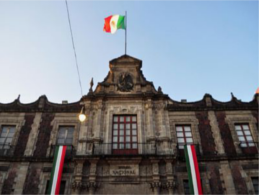 The Museo Nacional de las Culturas MNC; (National Museum of Cultures) is a national museum in Mexico City dedicated to education about the world’s cultures, both past and present. It is housed in a colonial-era building that used to be the mint for making coins. Prior to this, the site was the home of the location of Moctezuma’s “Black House.” The mint was moved to Apartado Street in 1850, and the building was used for various purposes until it was converted to its current use in 1966. |
 The historic center of Mexico City also known as the Centro or Centro Histórico, is the central neighborhood in Mexico City, Mexico, focused on Zócalo or main plaza and extending in all directions for a number of blocks, with its farthest extent being west to the Alameda Central.The Zocalo is the largest plaza in Latin America.It can hold up to nearly 100,000 people. This section of the capital has just over nine square km and occupies 668 blocks. It contains 9,000 buildings, 1,550 of which have been declared of historical importance. Most of these historic buildings were constructed between the 16th and 20th centuries. It is divided into two zones for preservation purposes. |
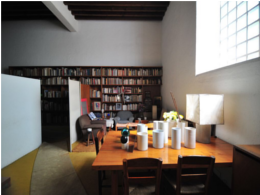 Luis Barragán House and Studio Luis Barragán House and Studio, also known as Casa Luis Barragán, is the former residence of architect Luis Barragán in Miguel Hidalgo district, Mexico City.It is owned by the Fundación de Arquitectura Tapatía and the Government of the State of Jalisco. It is now a museum exhibiting Barragán’s work and is also used by visiting architects.It retains the original furniture and Barragán’s personal objects. These include a mostly Mexican art collection spanning the 16th to 20th century, with works by Picasso, Diego Rivera, José Clemente Orozco, Jesús Reyes Ferreira and Miguel Covarrubias. Located in the west of Mexico City |
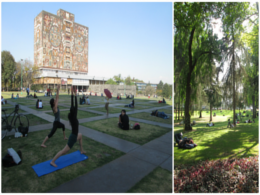 Ciudad Universitaria (University City), Mexico, is UNAM’s main campus, located in Coyoacán borough in the southern part of Mexico City. Designed by architects Mario Pani and Enrique del Moral, it encloses the Olympic Stadium, about 40 faculties and institutes, the Cultural Center, an ecological reserve, the Central Library, and a few museums. It was built during the 1950s on an ancient solidified lava bed in Coyoacán called “El Pedregal” to replace the scattered buildings in downtown Mexico City where classes were given. It was completed in 1954 at a cost of approximately $25 million. At the time of its completion it was the largest single construction project in Mexico since the Aztecs. |










